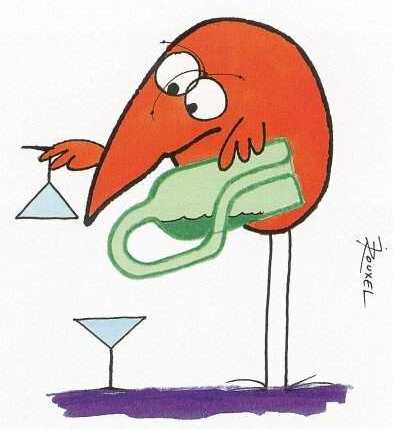The ternary logic
published: 24 September 2020 / updated 7 October 2020
Preamble
Let's get directly into the subject. Binary logic is two values: TRUE and FALSE. That's all.
It is the base from which are built all the binary logic through the operators OR, AND, NOT and the resulting functions in electronics, NOR, NAND, XOR....
So a ternary logic, why do it, if the binary logic responds so perfectly needs to?
Manage unknown cases
We will illustrate the ternary logic with two extremely concrete cases.
The first case is that of a sliding door, of this type of door that we find in all shopping centers:

Let's just take a clapper, the one on the right for example. We can consider that this clapper has two states:
- leaf closed: state FALSE
- leaf open: status TRUE
To confirm each of these states, the manufacturer has fitted each leaf with a contactor limit switch confirming the state of the leaves. These contactors act on the motorization to stop this motorization as soon as one of these binary states is reached.
But the state of a leaf cannot be linked to these contactors alone. It exists the case where each contactor indicates TRUE, which is physically impossible for a leaf: it cannot be opened AND closed! ... except in quantum physics..
On the other hand, there is one case that happens all the time. When is it the two contactors indicate FALSE: the leaves are neither open, nor closed.
Binary logic cannot describe the state of a leaf which in this case is neither open nor closed.
In automatic mode, sequential logic knows how to manage perfectly without having to take into account a third state, ie a UNKNOW state.
The ternary logic of the SQL language
Here are two examples of the action of the logical operator AND in SQL language:
SELECT TRUE AND TRUE SELECT TRUE AND FALSE
The SQL language includes a third state: NULL , which is similar to the state UNKNOW of our door leaf.
Still in SQL language, here are all the ternary logical combinations with the logical operator OR:
SELECT TRUE OR TRUE; -- result: 1 SELECT TRUE OR NULL; -- result: 1 SELECT TRUE OR FALSE; -- result: 1 SELECT NULL OR TRUE; -- result: 1 SELECT NULL OR NULL; -- result: NULL SELECT NULL OR FALSE; -- result: NULL SELECT FALSE OR TRUE; -- result: 1 SELECT FALSE OR NULL; -- result: NULL SELECT FALSE OR FALSE; -- result: 0

there is no problem.
Ternary logical operators
The idea is to reproduce, in FORTH language, the ternary equivalent of the operators AND, OR and NOT:
The ternary OR operator
Here is the table of ternary logic states for the operator OR:
| A | B | A OR B |
|---|---|---|
| True | True | True |
| True | Unknow | True |
| True | False | True |
| Unknow | True | True |
| Unknow | Unknow | Unknow |
| Unknow | False | Unknow |
| False | True | True |
| False | Unknow | Unknow |
| False | False | False |
In FORTH language, we have no logical UNKNOW state. We go therefore define numerical values and associate them with a logical equivalent ternary:
\ tfl : ternary flag \ tfl = 0 is FALSE flag \ tfl = 1 is TRUE flag \ tfl = 2 is UNKNOW flag
According to this text:
- value = 0, the ternary flag is FALSE
- value = 1, the ternary flag is TRUE
- value = 2, the ternary flag is UNKNOW
Why this choice of 0, 1 and 2?
If we take any integer, 16 or 32 bits, simply hiding on bit b0, there are two possible states: 0 for an even value, 1 for an odd value.
If we mask TRUE (in binary 1111111111111111), we get 1 which remains TRUE in ternary logic. It will be the same for all other values odd integers.
We could have proceeded differently: 0 for FALSE, positive for TRUE and negative for UNKNOW.
Here is a video which explains ternary numeration (base 3). It is this video that has oriented our choice on the values 0 (FALSE), 1 (TRUE) and 2 (UNKNOW):
For the ternary mechanics to work in FORTH language, we go first
create the word n>tfl:
\ convert decimal value to ternary flag : n>tfl ( n --- tfl) dup 0= if \ test if n equal 0 drop 0 else dup 1 and 0> if \ test if n is ODD drop 1 else drop 2 \ else n is EVEN then then ;
This word n> tfl is simple and efficient:
- if n is zero, stack zero
- if n is odd, stack 1
- if n is even, stack 2
If we want to test two values, we will add their ternary values like this:
\ sum two ternary flags \ 0 2 on stack: n>tfl swap n>tfl 10 * +
Thus, two ternary flags will merge into 9 possible values: 00, 01, 02, 10, 11, 12, 20, 21 and 22.
We can now define the ternary operator TOR (for Ternary OR):
\ ternary OR : tOR ( n1 n2 --- tfl) n>tfl swap n>tfl 10 * + dup 11 = if drop 1 exit then dup 12 = if drop 1 exit then dup 10 = if drop 1 exit then dup 21 = if drop 1 exit then dup 22 = if drop 2 exit then dup 20 = if drop 2 exit then dup 01 = if drop 1 exit then dup 02 = if drop 2 exit then 00 = if 0 exit then ;
There are certainly much more elegant methods. We will talk about this later.
The interest of this definition is to show a readable way of
create this operator tOR.
The ternary AND operator
Here is the table of ternary logic states for the AND operator:
| A | B | A AND B |
|---|---|---|
| True | True | True |
| True | Unknow | Unknow |
| True | False | False |
| Unknow | True | Unknow |
| Unknow | Unknow | Unknow |
| Unknow | False | False |
| False | True | False |
| False | Unknow | False |
| False | False | False |
\ ternary AND : tAND ( n1 n2 --- tfl) n>tfl swap n>tfl 10 * + dup 11 = if drop 1 exit then dup 12 = if drop 2 exit then dup 10 = if drop 0 exit then dup 21 = if drop 2 exit then dup 22 = if drop 2 exit then dup 20 = if drop 0 exit then dup 01 = if drop 0 exit then dup 02 = if drop 0 exit then 00 = if 0 exit then ;
The ternary NOT operator
Here is the table of ternary logic states for the NOT operator:
| A | NOT A |
|---|---|
| True | False |
| Unknow | Unknow |
| False | True |
\ ternary NOT : tNOT ( n1 --- tfl) n>tfl dup 1 = if drop 0 exit then dup 2 = if drop 2 exit then 0 = if drop 1 exit then ;
Other solutions
Gordon Charlton solution
: tOR ( tfl1 tfl2 -- tfl3)
or dup 2 > if 2 - then ;
Branchless tOR:
: tOR
or dup 1+ 4 / 2* - ;
Bruce R. McFarling solution
Though in my poor xForth, condemned to run on a 65C02, only the tOR would be faster... branching would be faster than multiplying, which is painfully slow.
Now, the only time {A,B,tAND} is not {A,B,AND} is when {A,B,+}>2 => {A,B,tAND}=2, so perhaps:
: tAND ( tfl1 tfl2 -- tfl3 )
2DUP AND >R + 2 > 2 AND
R> OR ;
